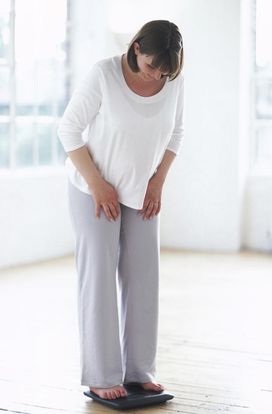3 weeks and 6 days pregnant

This microscope view of an embedded blastocyst shows the amniotic cavity (semicircular white area at top), with the cells that will develop into the baby just below (dark oval at the 12 o’clock position). The yolk sac is the pink area below..
Complex changes are taking place inside your uterus to create a safe and nourishing environment for your unborn baby.
The ball of cells embedded in the uterus is already laying down the foundations for its future life as an embryo. At two layers thick, the germ cells form a flat disc that divides the fluid-filled inner part of the ball of cells into two chambers. The smaller of these fluid-filled chambers will become the amniotic sac. The larger chamber, lying closest to the future placenta, will become the yolk sac that supports the early embryo. The umbilical cord will eventually develop close to the smaller chamber. The inner germ cells have been developing at a slower rate than the rapidly expanding outer cell layers.
At first the umbilical cord is a simple stalk, containing no blood vessels but simply anchoring the embryo to the future placenta, which will eventually become your unborn baby’s lifeline.
I’m hoping I’m pregnant, but I’m already worrying about the amount of weight I might put on, and am scared I’ll never be slim again!
These days, it is almost impossible to pass a newspaper stand without seeing the latest celebrity who has not only fitted straight back into her clothes after having her baby, but who actually weighs less than she did before pregnancy. However, this is concerning for health professionals, as a dramatic weight loss after the birth is not good for mother or baby.
The average weight gain during pregnancy is 11–14.5kg (25–32lb), if you have a Body Mass Index (BMI) within the normal range. Your baby and her support system will make up a good proportion of this, as will the increased pregnancy fluids, fats, and an enlarged uterus. Much of this extra weight will be lost as soon as your baby is born. Also, after the birth, some of this extra weight provides nutrients for breastfeeding, which uses up to 500 calories a day.
The most sensible approach to controlling your weight during pregnancy is to eat a healthy diet and take gentle exercise to ensure that weight gain is not too dramatic. You should aim to eat around 2,100–2,500 calories a day, increasing this by 200 calories in the last trimester of pregnancy – the equivalent of a banana and a glass of milk.
Newborns are getting heavier.
This is mostly due to improved diet and living standards. However, obesity in the mother is another factor – if the mother is overweight, there is an increased risk of diabetes, which can increase the baby’s weight.

You’ll gain weight in the months to come but not necessarily an excessive amount. Try not to become obsessive about weighing yourself.
Be the first to support
Be the first to share
Comment (0)
Related Blogs & Vlogs
No related events found.
Loading more...